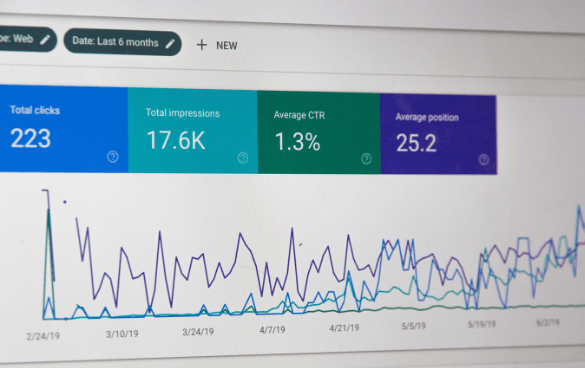Enhancing Your Campaigns with Remarketing In Google Analytics
Enhancing Your Campaigns with Remarketing In Google Analytics
Blog Article
Maximize Your ROI With Remarketing in Google Analytics
In the realm of electronic advertising, the utilization of remarketing approaches within Google Analytics has proven to be a potent tool for boosting roi. By harnessing the power of customer data and tailoring ads to specific target market sections, organizations can dramatically intensify their conversion prices. The real essential lies in the art of accuracy - understanding user actions, crafting engaging advertisements, and continuously refining techniques to drive optimum outcomes. The trip to taking full advantage of ROI with remarketing is a nuanced path led with insights and chances that can reshape the trajectory of your marketing undertakings.
Recognizing Remarketing in Google Analytics
Understanding remarketing in Google Analytics is crucial for optimizing your digital advertising method. Remarketing permits you to target users that have actually previously visited your site or communicated with your app, presenting them with customized advertisements as they search other websites or use other applications within the Google Present Network. This method assists keep your brand top of mind and urges users to go back to your website, inevitably enhancing the likelihood of conversion.
By using Google Analytics, you can track the performance of your remarketing campaigns, obtaining valuable insights right into individual actions, interaction, and conversions. This information allows you to fine-tune your targeting, messaging, and bidding process strategies to improve the general performance of your projects.
In addition, recognizing the various kinds of remarketing listings offered in Google Analytics, such as typical, dynamic, and comparable target markets, enables you to develop highly fractional and tailored campaigns customized to particular customer segments. This level of granularity can dramatically boost the significance and impact of your remarketing efforts, ultimately optimizing your roi.
Setting Up Remarketing Lists
To successfully carry out remarketing projects in Google Analytics, the preliminary action involves developing and setting up remarketing lists targeting certain customer sections based on their communications with your web site or application. By establishing remarketing lists, you can tailor your advertising and marketing initiatives to get to customers who have currently revealed passion in your solutions or products.
To begin, navigate to the Admin section of your Google Analytics account and select the Building where you desire to develop the remarketing checklist. Under the Residential property column, click on 'Audience Definitions' and choose 'Audiences.' Next off, click on the red 'New Audience' button and select 'Create New' to specify the parameters for your remarketing checklist.

Crafting Reliable Remarketing Ads

When crafting your advertisements, emphasis on creating attention-grabbing headlines and engaging visuals that stick out to potential consumers. Include solid calls-to-action that encourage individuals to revisit your site and complete a wanted action. Use dynamic remarketing to reveal tailored ads featuring services or products that customers have actually previously checked out on your website.
Additionally, make certain that your ads are mobile-friendly since a click here to read significant portion of internet website traffic comes from mobile devices. Examination various ad variations to determine which messages and designs drive the very best results. By continually refining and maximizing your remarketing ads based on efficiency information, you can optimize their effectiveness and improve your return on financial investment.
Studying Remarketing Performance
With Google Analytics, marketers can track the performance of their remarketing projects in real-time, permitting them to recognize trends, patterns, and areas for enhancement quickly. By assessing the information, marketing experts can establish which advertisements are executing well, which audience sectors are responding positively, and which networks are driving the most conversions. This degree of granularity makes it possible for marketers to make data-driven choices to enhance their remarketing campaigns for better outcomes.
Enhancing ROI With Remarketing
Assessing remarketing information in Google Analytics enables marketers to identify possibilities for maximizing roi (ROI) through tactical changes - What Is “Remarketing” In Google Analytics?. To optimize ROI with remarketing, it is important to recognize the actions of your target market. By evaluating user interactions, such as the pages navigate to these guys they saw, the products they check my site viewed, or the actions they handled your site, you can customize your remarketing campaigns a lot more successfully
Segmenting your target market based on their behavior allows you to produce personalized and targeted ads that are most likely to reverberate with them. By showing relevant advertisements to specific sections of your target market, you can increase the chances of conversion and ultimately boost your ROI.
Moreover, checking different advertisement creatives, messaging, and offers can help determine what resonates finest with your target market. A/B testing enables you to explore different elements of your advertisements to establish what drives the greatest involvement and conversion prices.
Verdict
Finally, taking full advantage of ROI with remarketing in Google Analytics requires a tactical technique to analyzing individual habits, segmenting audiences, developing customized advertisements, and maximizing project performance. By leveraging data-driven insights and examining different strategies, organizations can enhance their remarketing initiatives to drive greater interaction and conversion rates. This organized technique guarantees that sources are successfully alloted in the direction of taking full advantage of returns on financial investment in remarketing campaigns.
Next off, click on the red 'New Target market' switch and select 'Produce New' to specify the specifications for your remarketing list.
By continuously refining and optimizing your remarketing advertisements based on performance data, you can maximize their efficiency and boost your return on investment.
By delving into these insights, marketers can get a comprehensive understanding of just how their remarketing efforts are reverberating with their target audience and driving conversions. To maximize ROI with remarketing, it is critical to understand the habits of your target market.In conclusion, taking full advantage of ROI with remarketing in Google Analytics requires a critical technique to evaluating individual actions, segmenting audiences, developing customized ads, and enhancing campaign efficiency.
Report this page